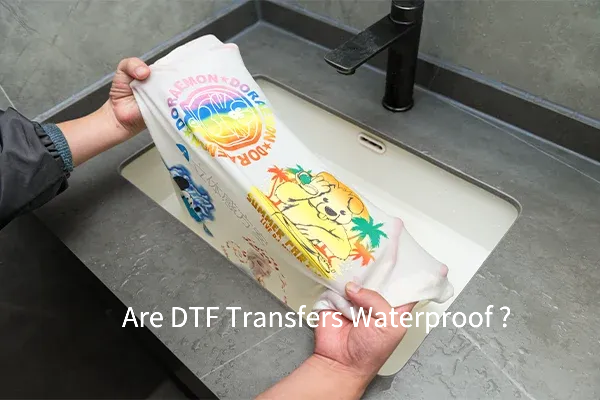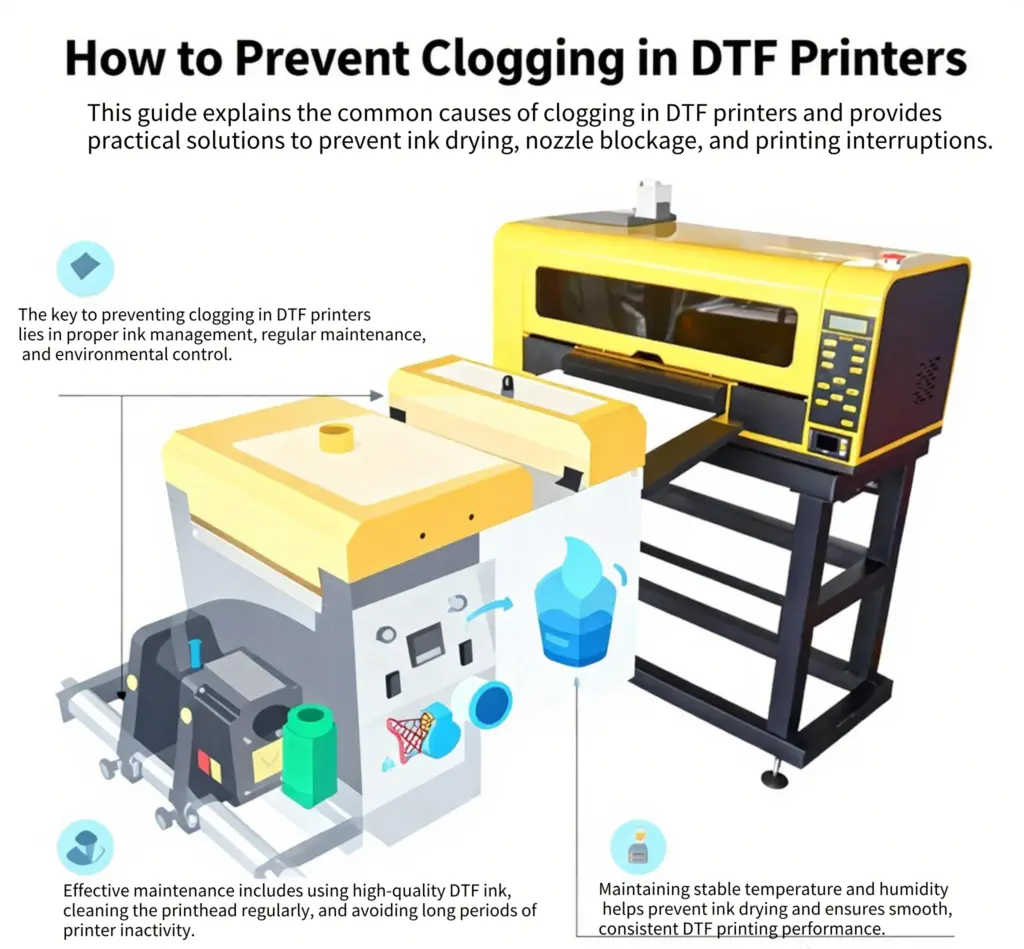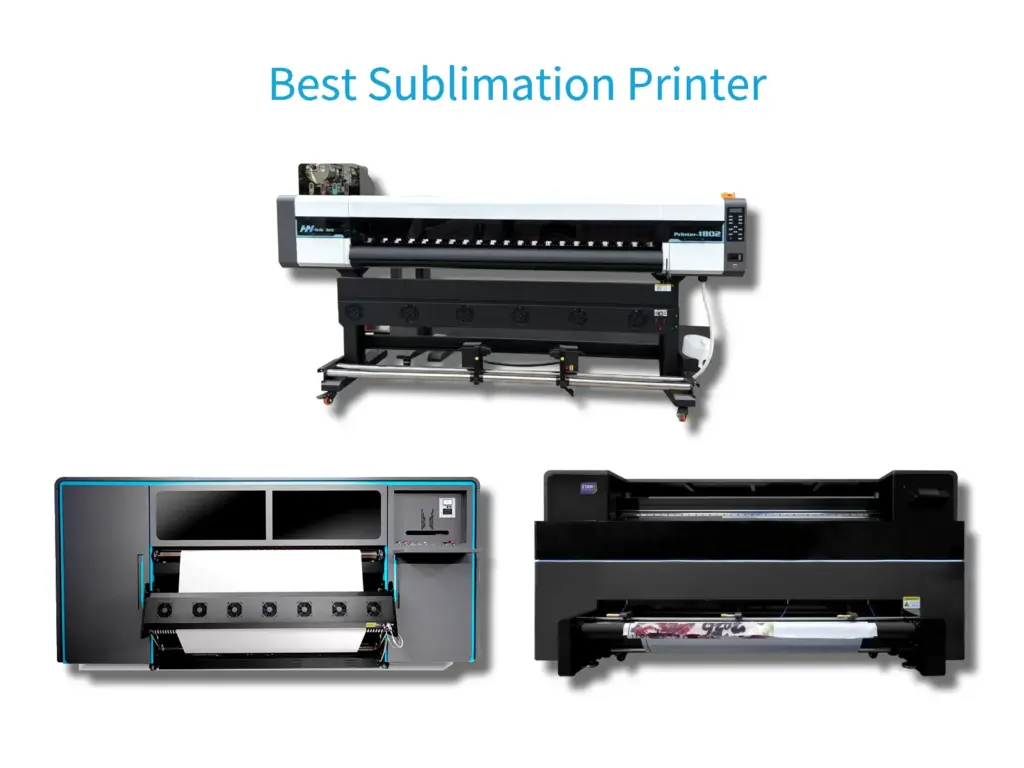DTFの転送は、印刷業界で非常に人気が高まっています, デザインと画像が衣服に転送される方法に革命をもたらす. 完璧なDTFプリントを達成するための重要な側面の1つは、熱を押すプロセスです. この包括的なガイドでは、, DTF転送の世界を掘り下げ、DTF転送を加熱する方法を知るための段階的なアプローチを提供します.
DTF転送とは何ですか?
DTF転送, またはフィルムへの直接転送, 従来のテクニックよりも多くの利点を提供する最先端の印刷方法です. 他の方法とは異なります, DTF転送は、インクと接着剤の両方を含む特殊な転送フィルムを利用します, 鮮やかで長持ちするプリントを可能にします. このプロセスにより、色が鮮やかなままであることが保証されます, 複数の洗浄の後でも, そして、画像はひび割れや衰退せずに無傷のままです.
フィルム転送に直接押す方法?
1. 適切な材料を選択します

DTF転送の熱圧力の旅に着手します, 適切な材料を手元に置くことが重要です. 何よりもまず, DTF転送用紙が必要です, 透明などのさまざまな形があります, 白, および接着剤. これらの論文は、デザインを衣服に転送する上で重要な役割を果たします. さらに, 必要なアクセサリーがいくつかあります, 含む DTF接着パウダー, ヒートプレスマシンと DTFインク, 滑らかで効率的な熱圧力を支援します プロセス.
2. デザインの準備
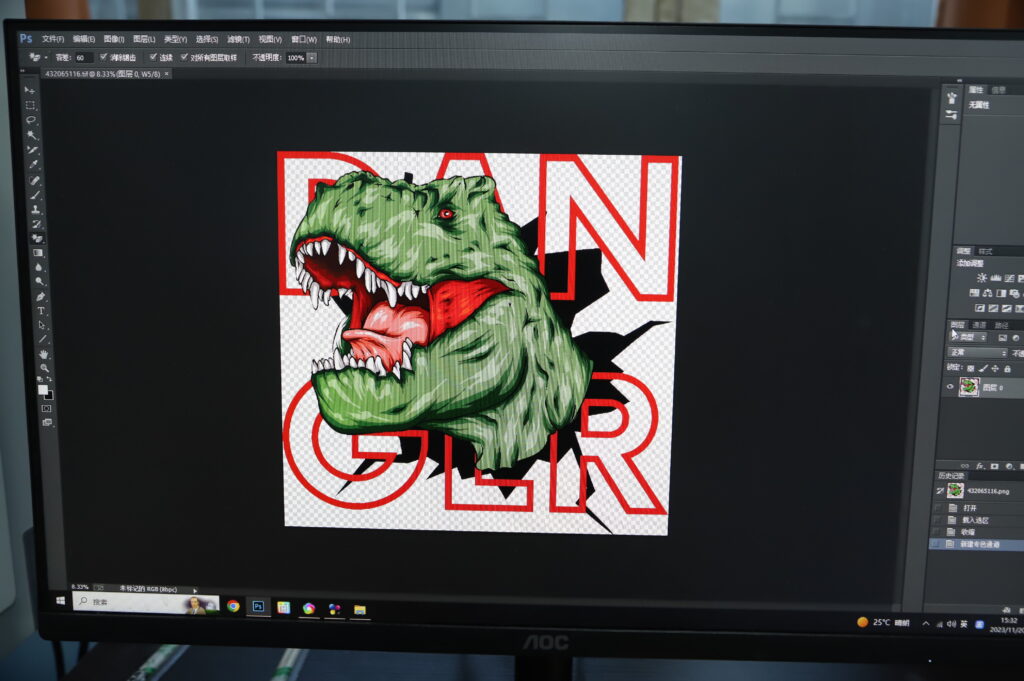
ヒートプレスを開始する前に, DTF転送に適したデザインを作成または選択することが不可欠です. あなたの創造性を活用して、永続的な印象を残すユニークで魅力的な画像をデザインする. デザインがDTF印刷と互換性があることを確認し、高品質のプリンターを使用して転送用紙に転送します. 結果を妨げる可能性のある不完全性または歪みについて設計を徹底的に分析する.
3. 衣服の準備

完璧なDTF転送を達成するため, 衣服の細心の準備が重要です. 衣服を徹底的に掃除して、汚れを取り除くことから始めます, ほこり, または、接着プロセスを妨げる可能性のある破片. 衣服が押されて平らであることを確認してください, 折り目や折り目が最終結果に悪影響を与える可能性があるため. 熱を押す前に衣服をアイロンをかけることは、最適な伝達を促進する滑らかで均一な表面を作成するのに役立ちます.
4. 転送の印刷

あなたのデザインの準備ができていて、衣服が準備されたので, DTF印刷プロセスに着手する時が来ました. 色を正確に調整して、望ましい結果を確実にすることから始めます. DTF転送の要件に一致するように、プリンタの設定を調整します. プリンターに応じて DTF転写紙 使用済み, 結果を最適化するには、特定の印刷モードまたはペーパータイプを選択する必要がある場合があります. 実験は、プリンターと転送用紙の特定の組み合わせに最適な設定を見つけるための鍵です.
5. 乾燥と硬化
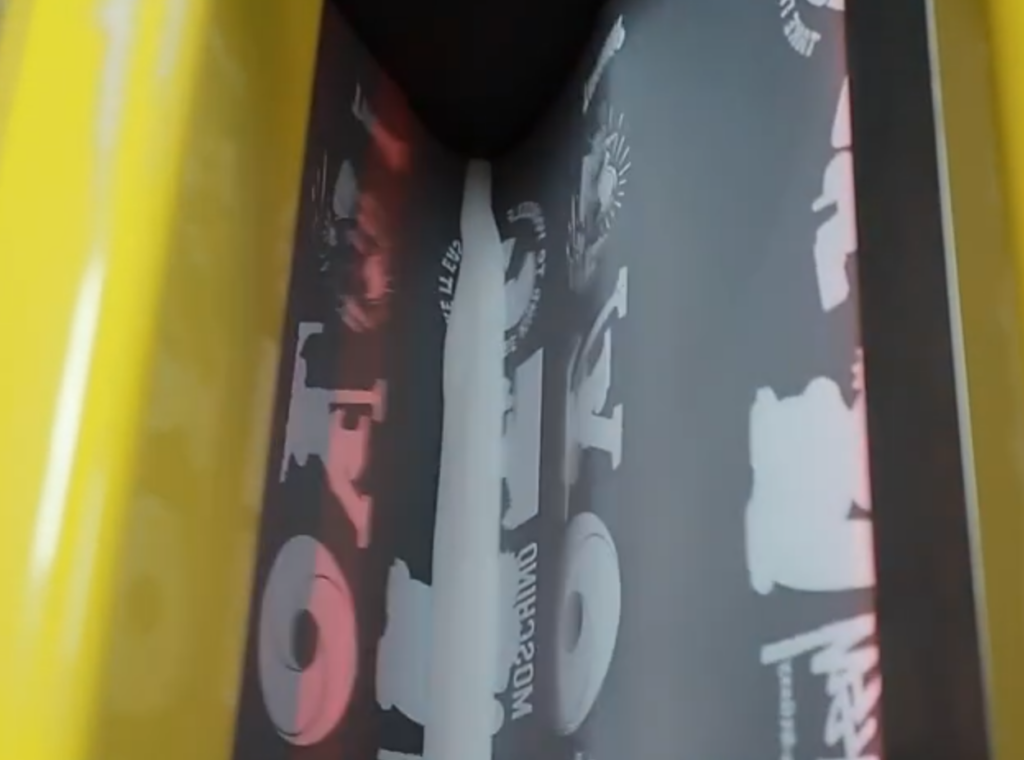
DTF転送が印刷された後, 転送された画像を適切に乾燥させて治療することが不可欠です. このステップにより、印刷の寿命と耐久性が保証されます. 乾燥と硬化のためにさまざまな方法を採用できます, 空気乾燥を含む, Aを使用します ヒートプレスマシン, または、プロの硬化室を利用します. どちらの方法を選択しても, 最適な接着と永続的な品質を達成するには、メーカーの指示とガイドラインに従うことが不可欠です.
6. ヒートプレスマシンの準備

ヒートプレスマシンのため、DTFを衣服に押し込む熱を押し込む上で重要な役割を果たします, 信頼できる知識を探す必要があります ヒートプレスマシンメーカー 相談してヒートプレスマシンを取得するには. マシンの設定を適切に調整することは、驚くべき結果を達成するために最も重要です. ヒートプレスマシンのコントロールと設定に慣れるために時間をかけてください, 時間など, 温度, と圧力. これらの変数は、転送の最終結果に大きな影響を与える可能性があります, そのため、特定の要件のために正確に調整されていることを確認してください.
7. Heat Pressing DTF転送

今、すべてが準備されています, 熱圧力プロセスに飛び込む時が来ました. 印刷されたDTF転送で衣服をヒートプレスマシンに置きます, 正しく配置されていることを確認します. 適切な温度を適用します, 時間, および圧力設定, 転送用紙と衣服の仕様に応じて. ヒートプレスを優しく閉じます, トランスファーフィルムが衣服と直接接触していることを確認する. マシンがプレスプロセスを完了できるようにします, そして、転送された衣服を注意深く取り除きます.
8. プレスと仕上げ

熱の押しが完了したら, DTF印刷された衣服の外観と寿命を強化するために、適切な圧迫後の手順に従うことが重要です. 転写フィルムを慎重に剥がすことから始めます, 転送された画像がそのままであることを保証します. 穏やかな洗剤を使用して、移動した衣服をきれいにして、残留物または余分なインクを除去します. ついに, 保護コーティングの適用や2回目の硬化プロセスのためにヒートプレスマシンを使用するなどの追加の仕上げ技術を利用することにより、印刷の外観と耐久性をさらに高めることを検討してください.
一般的な問題のFAQ
1. なぜ私のDTF転送は、熱を押している間に適切に接着していないのですか?
熱圧力中のDTF転送に関する接着問題のトラブルシューティングは、いくつかの要因に起因する可能性があります. 表面がきれいで汚れがないことを確認してください, オイル, または接着を妨げる可能性のある破片. また, 水分としわを取り除くためのプレス衣服. 温度を調整します, プレッシャー, 転送の仕様に応じて時間を押します. 最後に, 色付きのベースレイヤーを使用する場合, トランスファーフィルムとの適切な硬化または互換性を確保します, 不適切な組み合わせが接着の問題につながる可能性があるため.
2. 熱を押すとDTFの転送後に色が出血したり、汚れたりするのを防ぐにはどうすればよいですか?
DTF転送を押した後の色の出血や汚れの問題を避けるため, 圧迫フィルムと転送の印刷側が、プレス中に直接接触していることを確認してください, 動きを防ぐ. 圧力を調整します, 温度, 転送仕様に応じた時間を押します. 色がまだ出血している場合, 圧力を減らすか、プレス時間を増やすことを検討してください. 覚えて, 高品質の転送フィルムを使用し、メーカーの指示に熱心に従うことで、色の出血や汚れを大幅に最小限に抑えることができます.
3. 私のDTF転送は、熱を押した後、色あせたか、活気が欠けているように見えます; これを改善するにはどうすればよいですか?
DTF転送が薄れて見える場合、または熱を押すと活気がない場合, 温度と押す時間の調整を検討してください. 温度をわずかに上げるか、プレス時間を数秒延長すると、色の活気が向上する可能性があります. さらに, トランスファーフィルムが基板および転送プロセスに適していることを確認してください. 映画メーカーの指示に正確に従います, 推奨される温度範囲とプレス時間を含む, 活気に満ちた長期にわたる転送につながる可能性があります.
4. ヒートプレス中のDTF転送の画像の歪みやぼやきを防ぐにはどうすればよいですか?
DTF転送の画像の歪みやぼやきを防ぐため, 熱を押す前に、トランスファーフィルムと基板の両方が適切に整列していることを確認します. 登録マークまたはアライメントガイドを使用して、正確なポジショニングを維持する. トランスファーフィルムの配置中に過度の動きやシフトを避けてください. プレス中に圧力を上げることは、動きを防ぐのにも役立ちます, その結果、シャープで歪みのない転送が生じます.
5. 熱を押すと、DTF転送に縞模様やラインが表示されるのはなぜですか?
熱圧力後のDTF転送上の縞模様またはラインは、圧力が不十分であることを示すことができます。. 基質がきれいで、ストリーキングを引き起こす可能性のある粒子がないことを確認してください. プレス中に圧力を上げることを検討してください, トランスファーフィルムと基板間の適切な接触を確保する. さまざまな圧力設定を試すと、ストリーキングを排除し、転送された画像の全体的な品質を向上させるのに役立ちます.
6. DTFが熱を押した後に剥がれたり割れたりした場合はどうすればよいですか?
DTFの剥離または亀裂の加熱後の圧迫は、不十分なプレス時間または温度に起因する可能性があります. ヒートプレスマシンがトランスファーフィルムに指定された推奨温度範囲に到達することを確認してください. それに応じて押す時間を調整します, メーカーのガイドラインに従ってください. さらに, 転送フィルムと基質の互換性を再確認します, 彼らが互いに適していることを保証します. 皮を剥がしたり割れたりするのを防ぐためには、十分な熱と圧力による適切な硬化が不可欠です.
結論
Heat Pressing DTF転送の芸術を習得するには、プロセスと適切な材料と技術を包括的に理解する必要があります. このステップバイステップガイドに従うことにより, あなたは無限の可能性を解き放ち、DTF転送印刷の世界で驚くべき結果を達成することができます. あなたの創造性を受け入れます, さまざまなアプローチを試してください, そして、DTF転送の領域であなたの本当の可能性を解き放つためにあなたのスキルを継続的に強化します. もう躊躇しないでください – 飛び込んで、あなたの想像力が舞い上がります!


